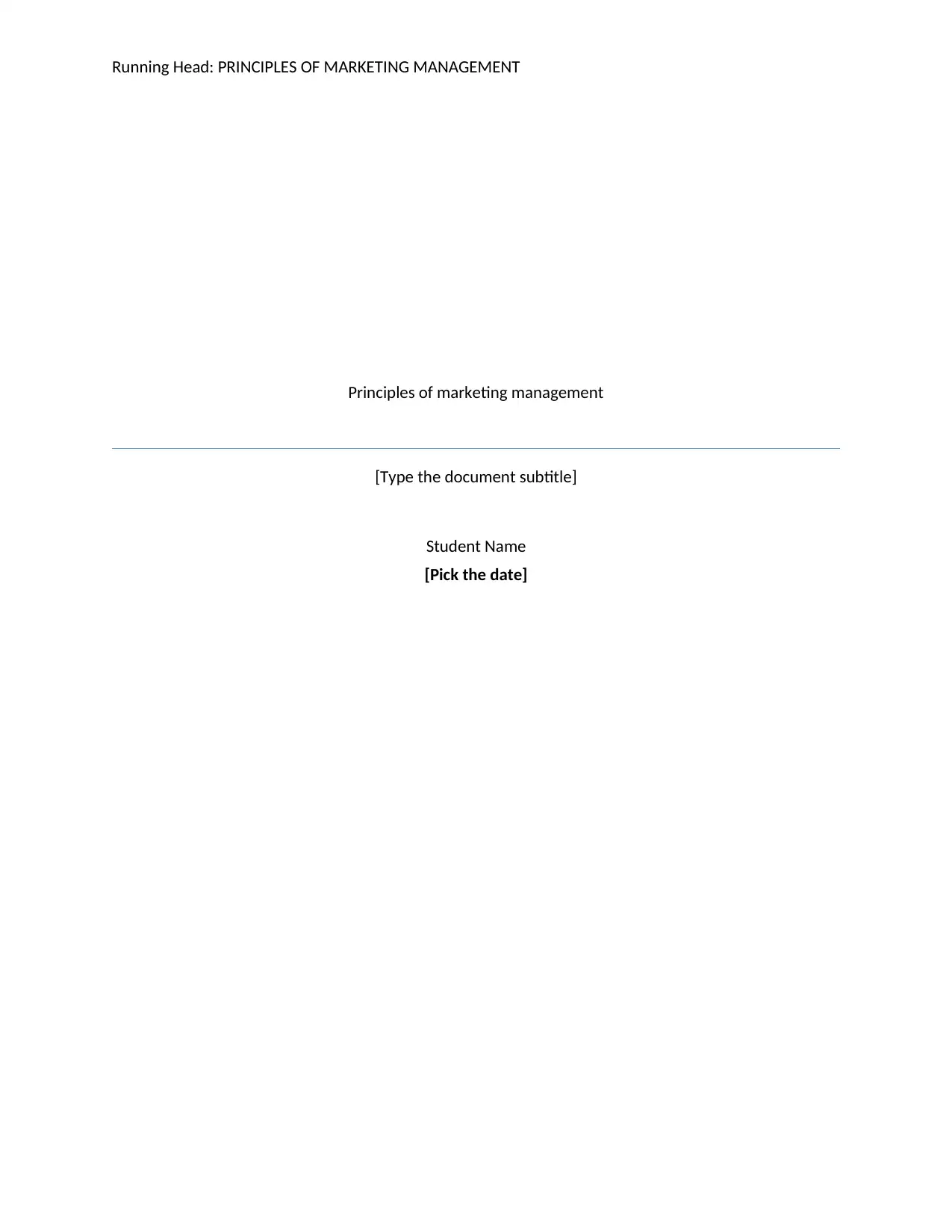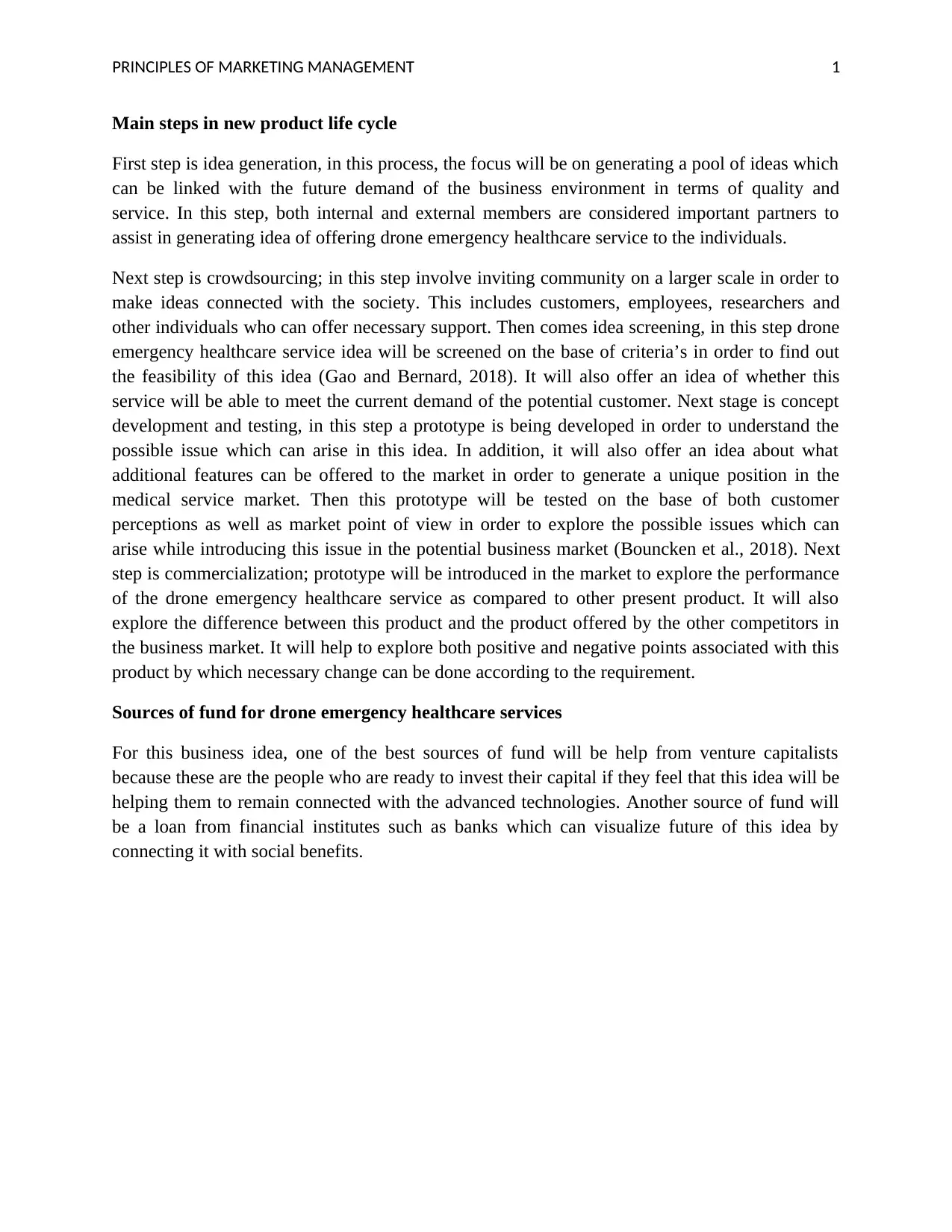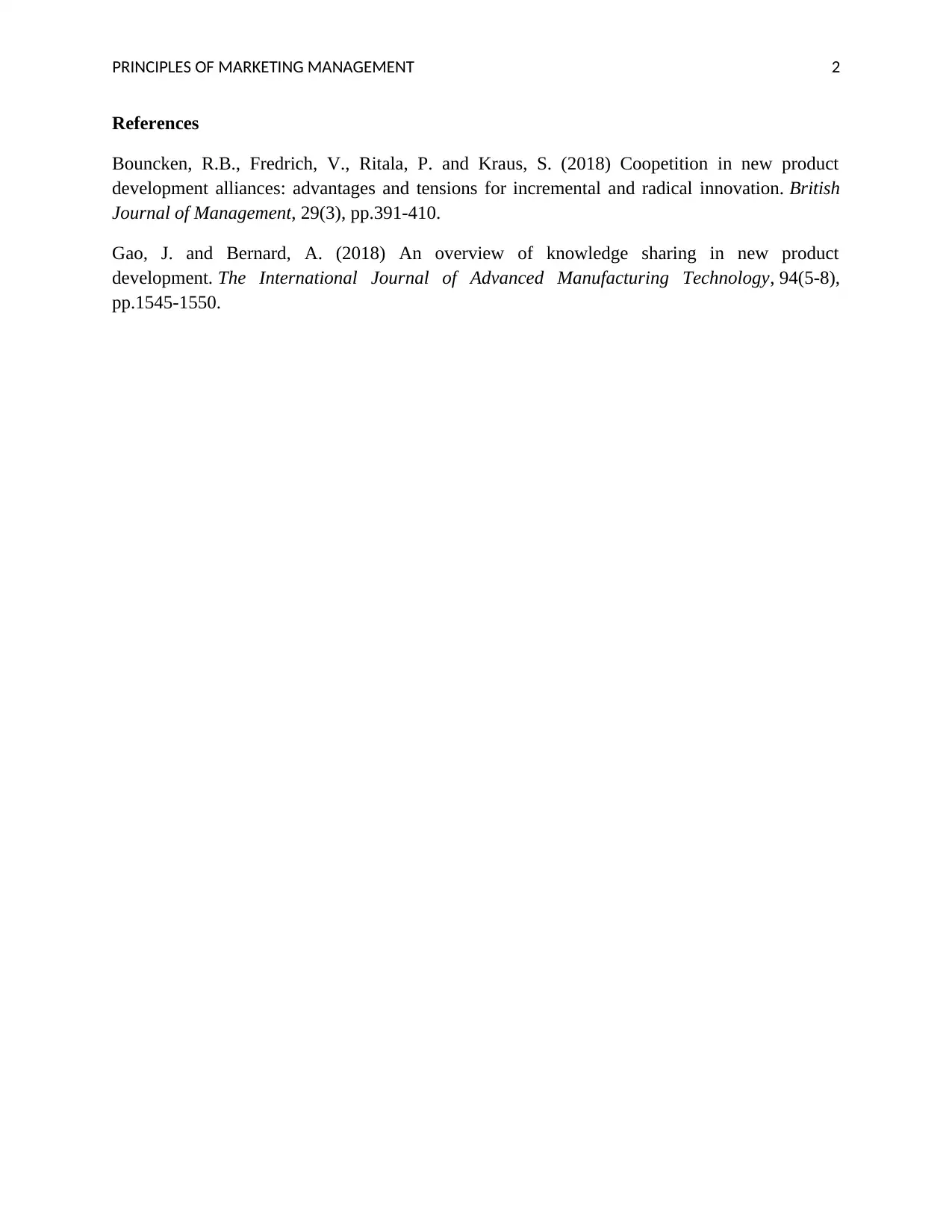Report: Marketing Management - New Product Lifecycle and Funding
VerifiedAdded on 2022/11/28
|3
|561
|451
Report
AI Summary
This report focuses on the principles of marketing management, specifically addressing the new product lifecycle for a drone emergency healthcare service. It begins with the initial stages of idea generation, emphasizing the importance of both internal and external sources, including crowdsourcing to gather insights from the community. The report then outlines the subsequent steps of idea screening, concept development, and testing, highlighting the prototype's role and the importance of customer feedback. The final stage discussed is commercialization, which involves introducing the product to the market and comparing its performance with competitors. Furthermore, the report explores potential funding sources for this venture, including venture capitalists and financial institutions, such as banks. References to relevant academic sources are also included to support the analysis and findings. This report provides a comprehensive overview of the marketing process for a new product in the healthcare sector.
1 out of 3










![[object Object]](/_next/static/media/star-bottom.7253800d.svg)